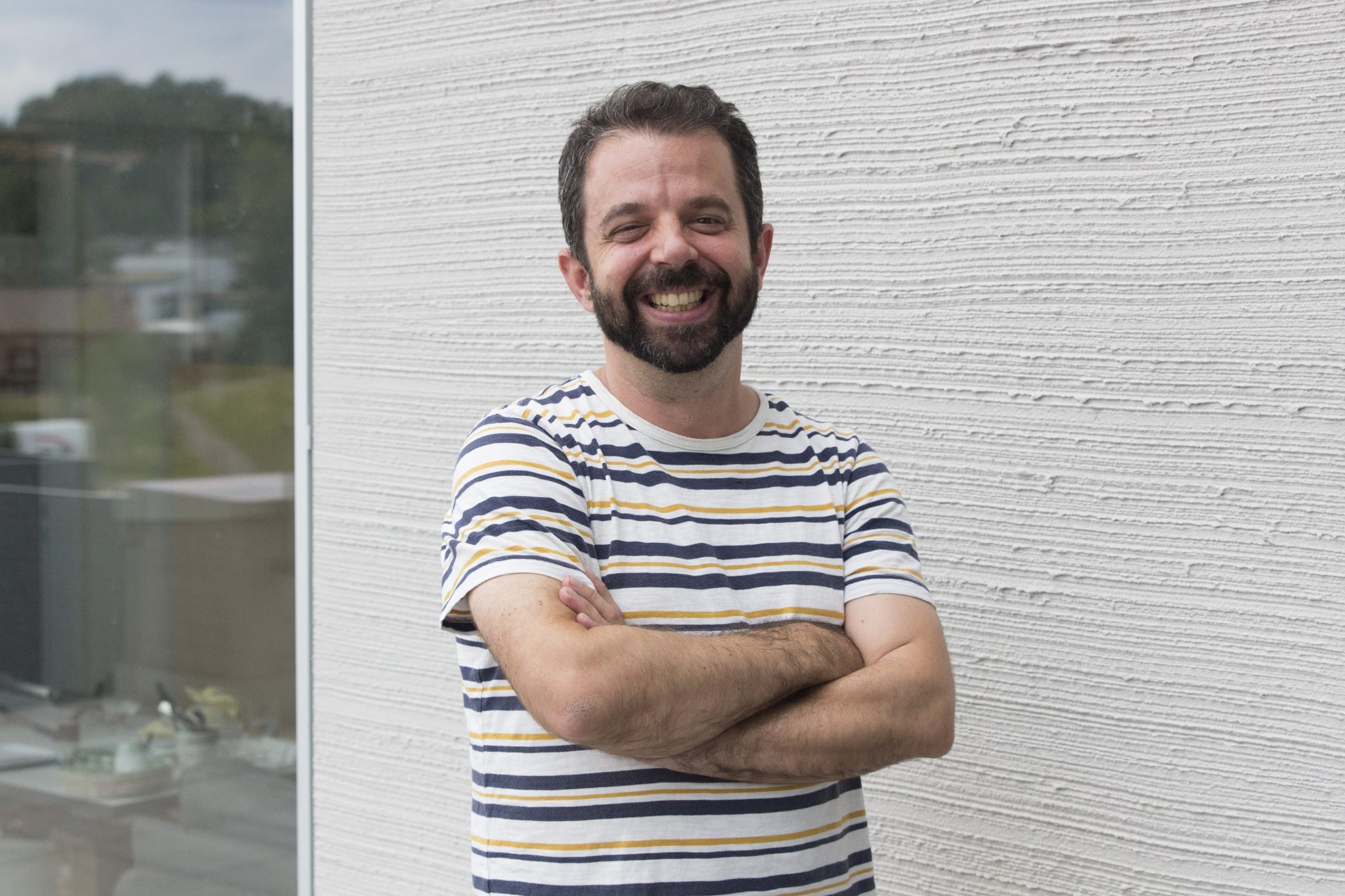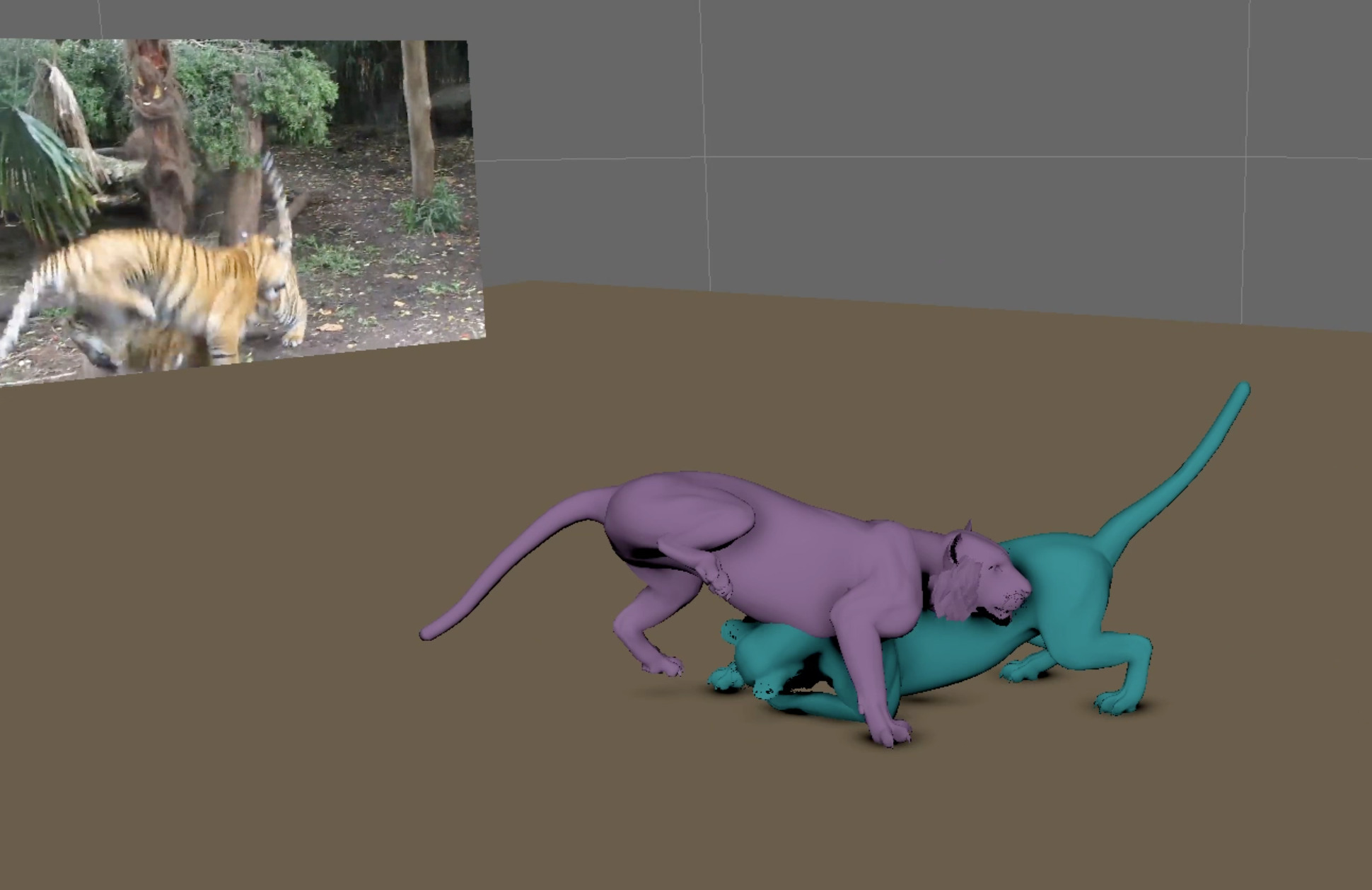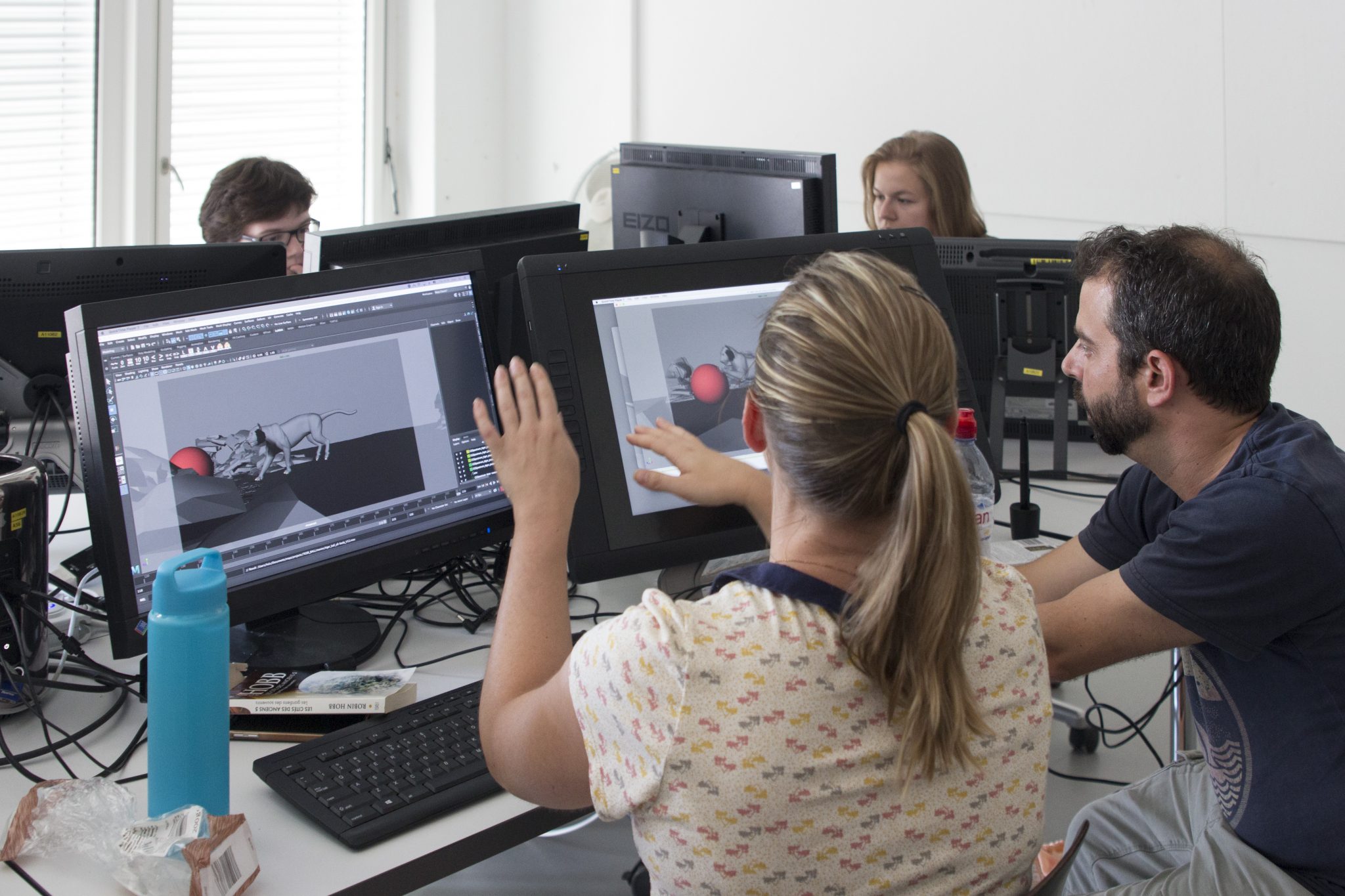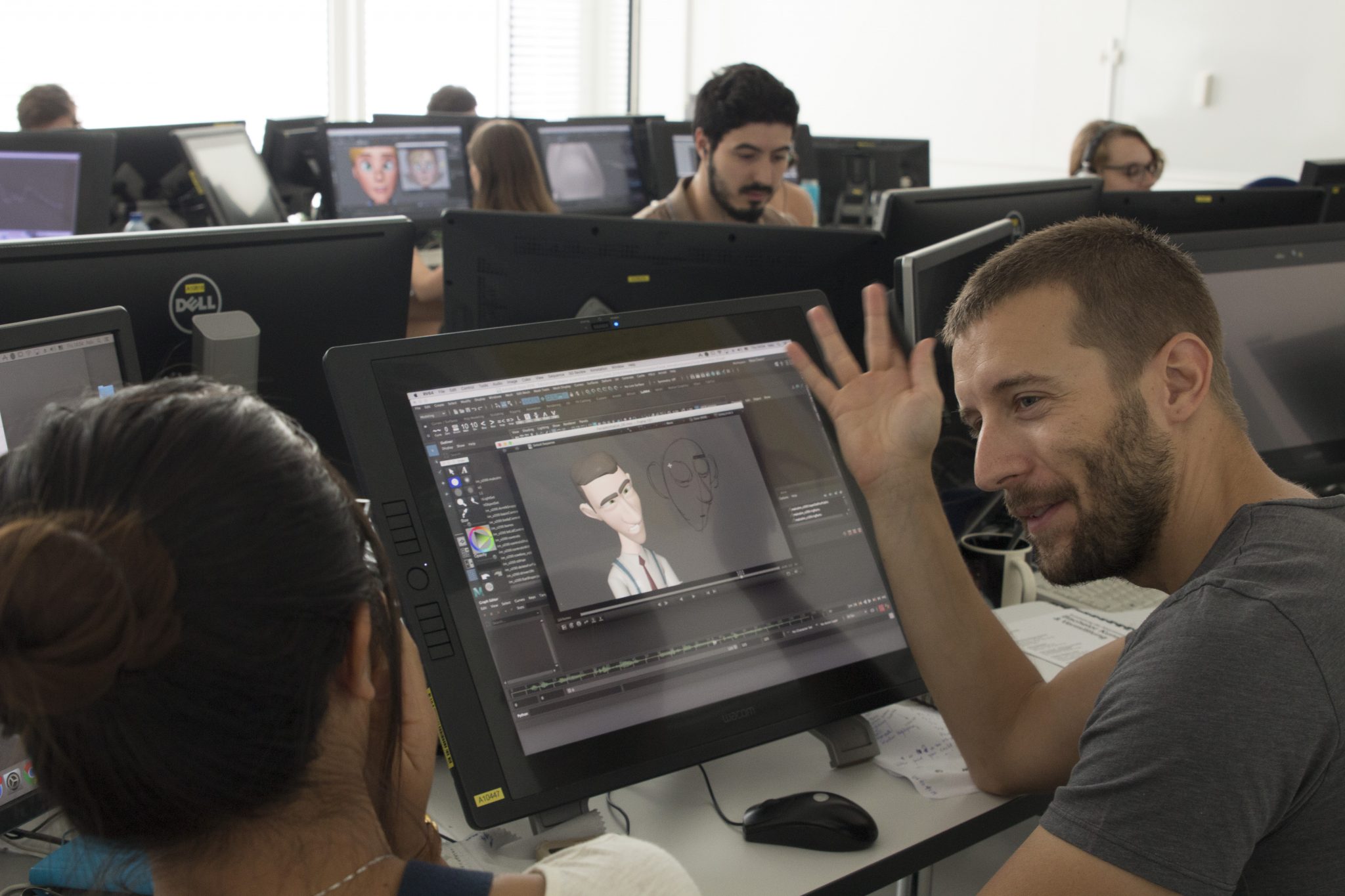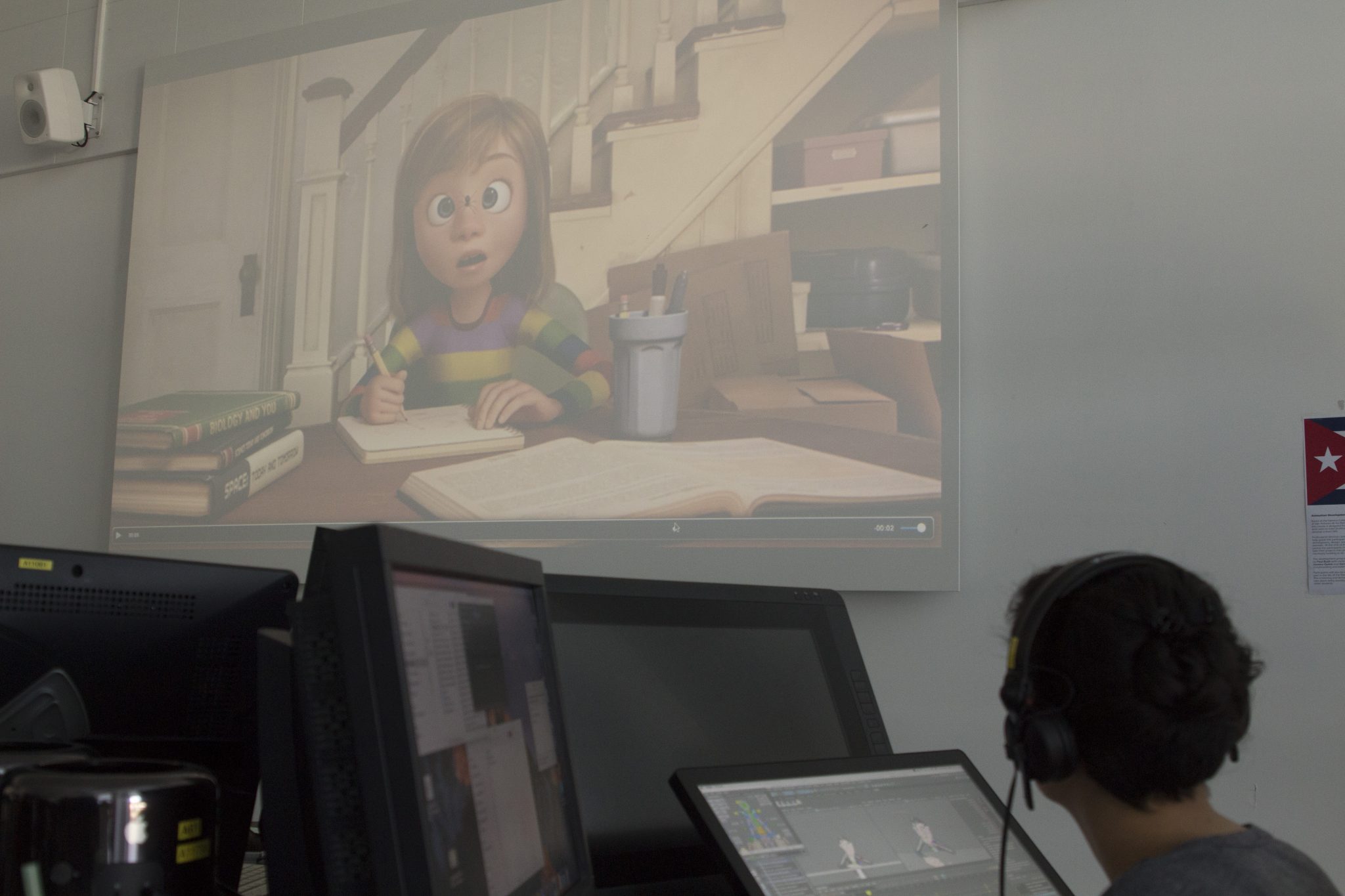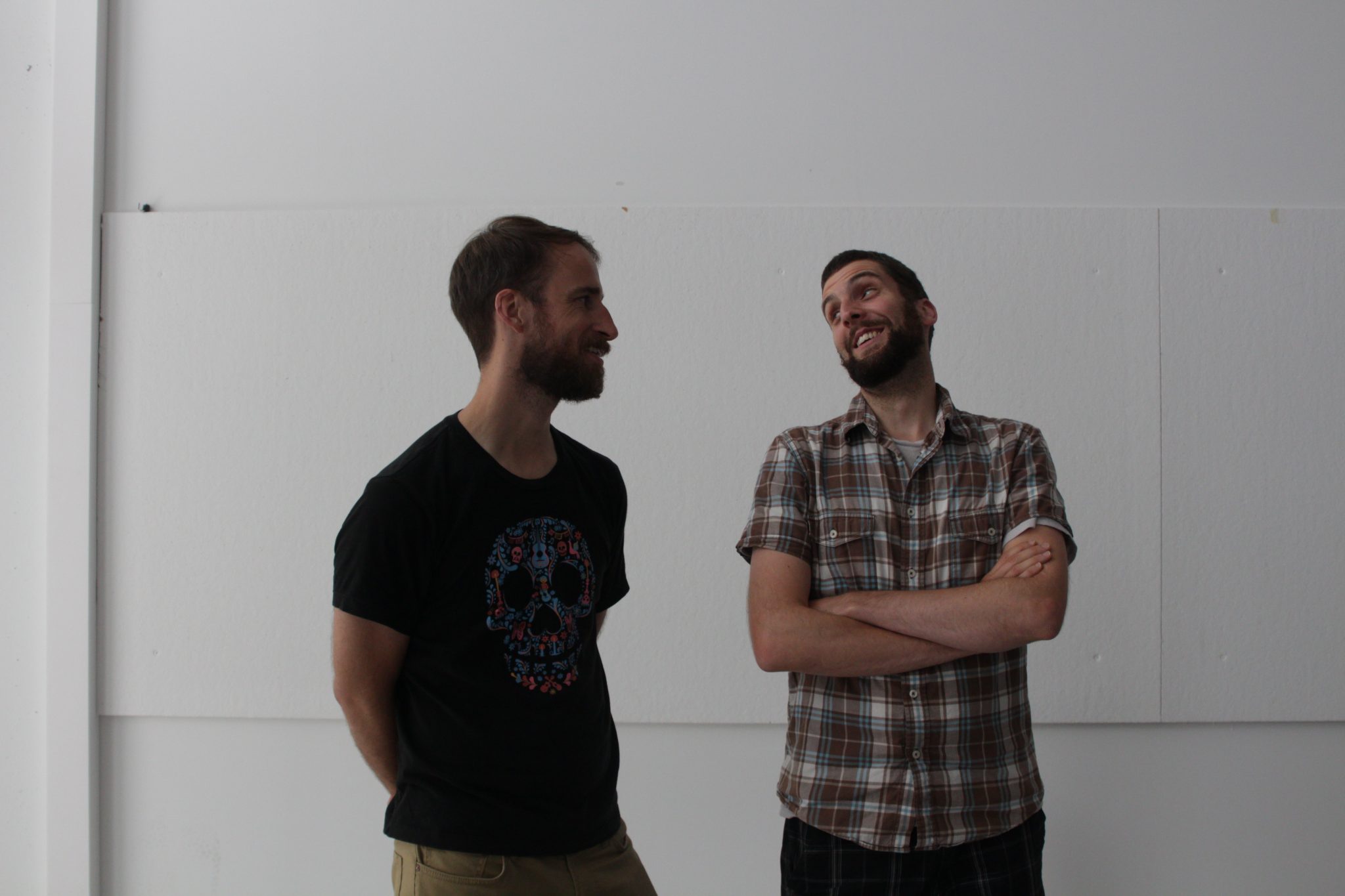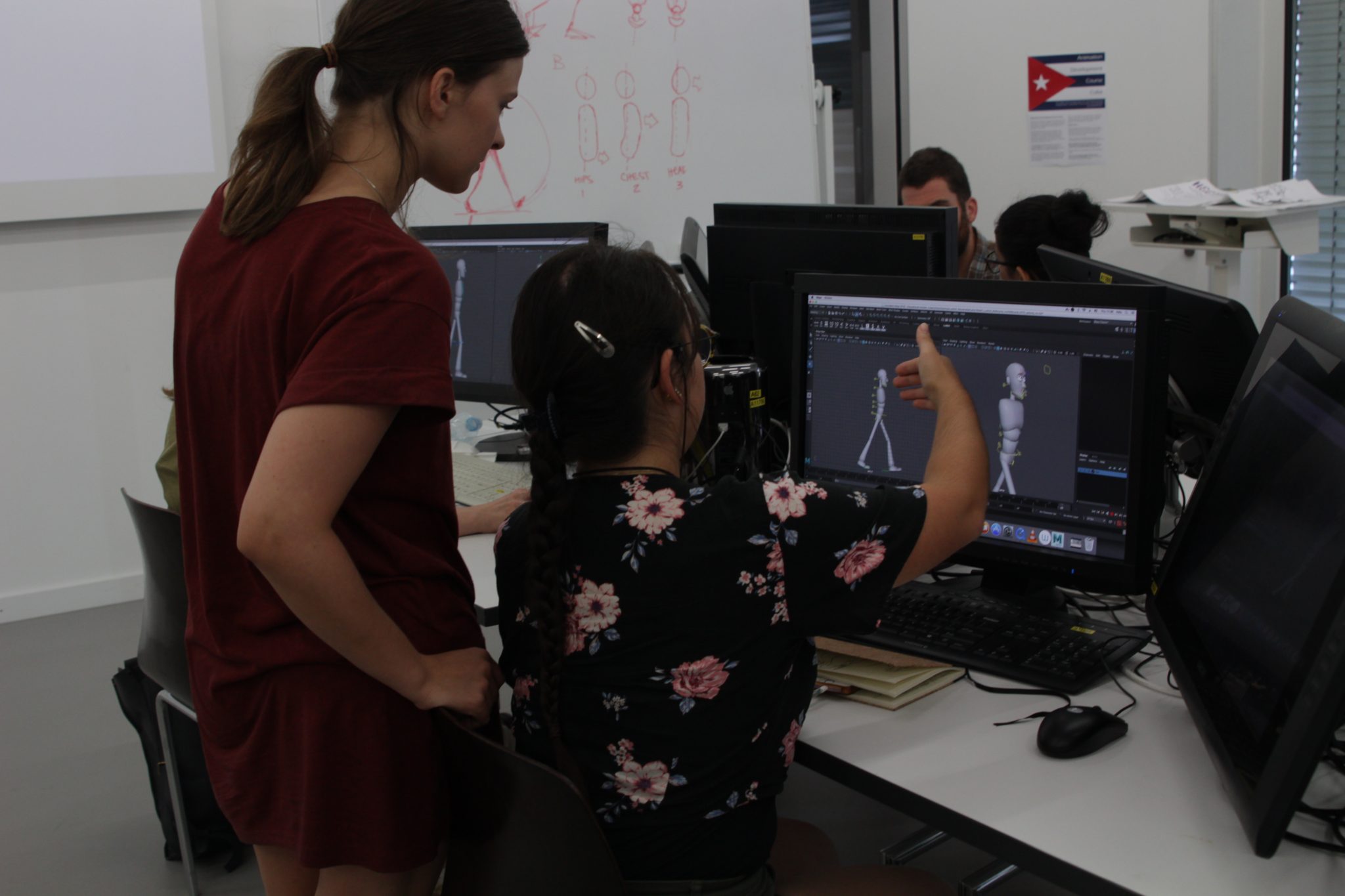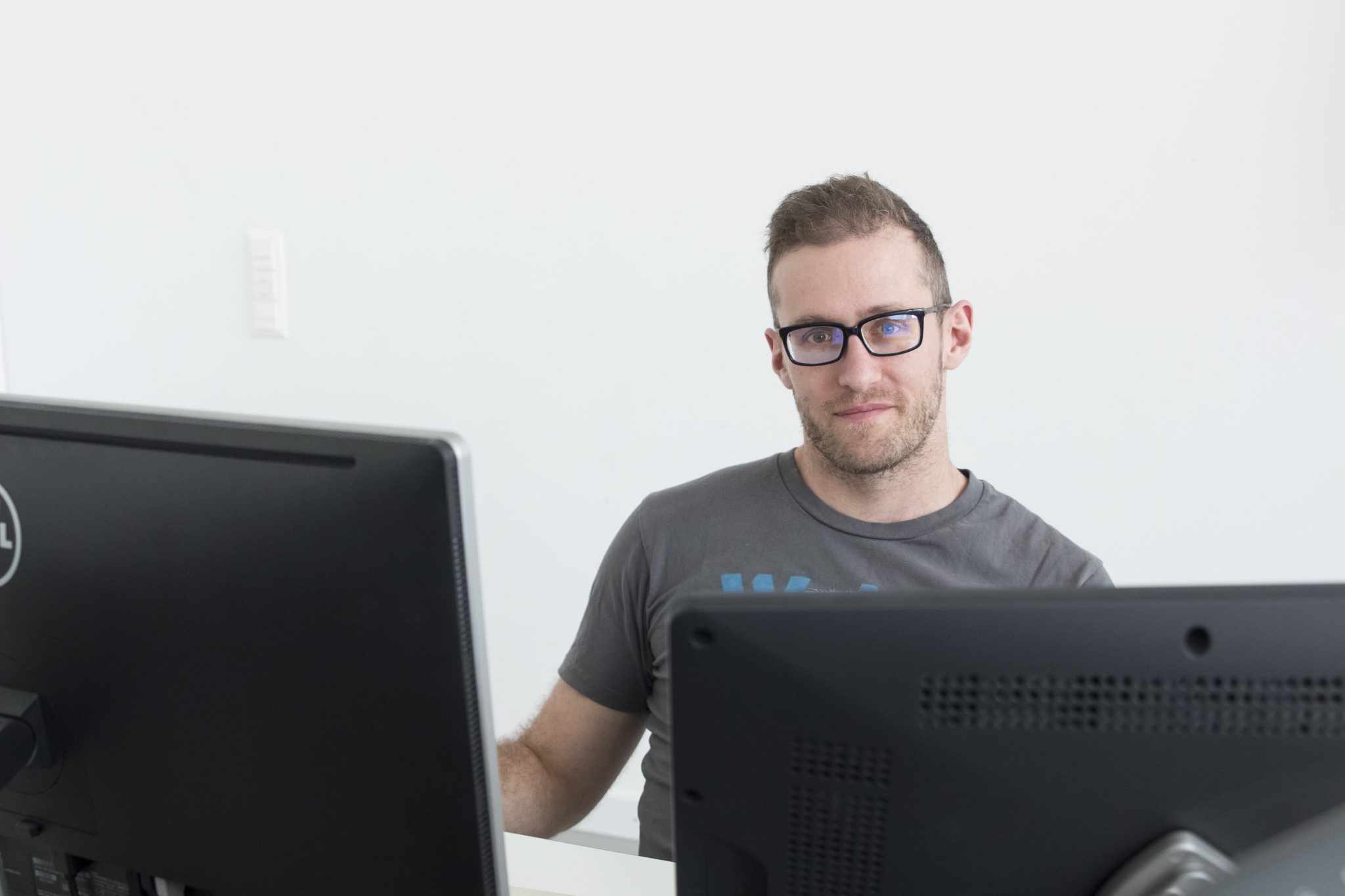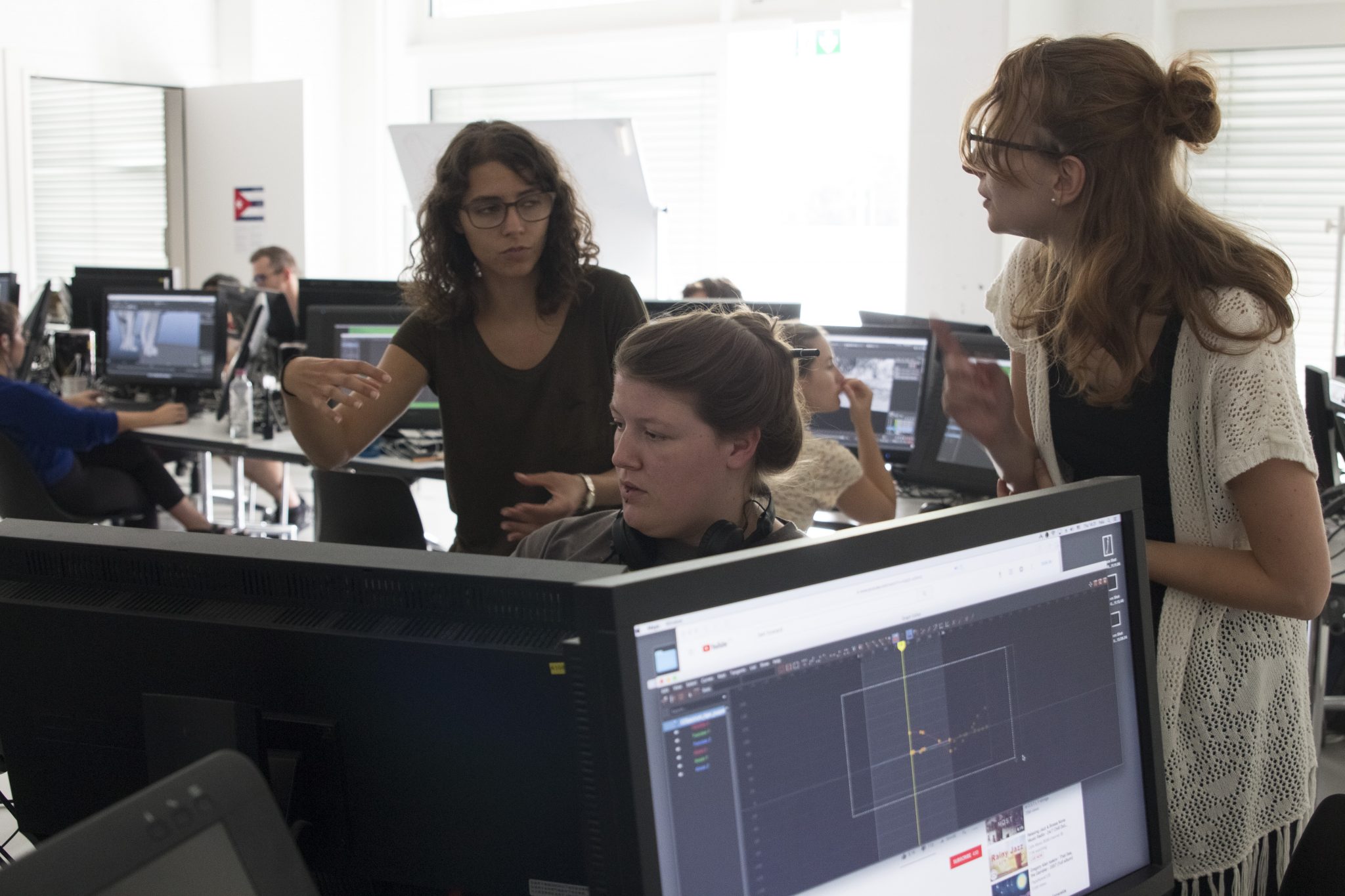LuMAA goes 2D!

It‘s been rough, being a 2D animator at HSLU during the summers. All your cool 3D animator friends are having fun and are levelling up their skills at LuMAA, meeting industry professionals and likeminded folks from abroad. Unless you’re ready to give up your sanity and soul for some intense CGI learning, the average 2D cartoon lover is excluded from all the fun… however, it seems the heavens (our lovely department heads) have finally heard our cries of agony.
After many many years of longing, begging, bargaining and hoping, we‘ve been granted the first ever 2D LuMAA and from what we‘ve heard it‘s here to stay!
Unlike the 3D LuMAA, instead of six weeks we were given only four weeks to pour our hearts and souls into making sure our drawings would come alive — but hey, beggars can’t be choosers and in the end, most of us found that this was the perfect length anyway!
A big portion of our class consisted of a bunch of HSLU animation alumni who have been waiting for the long promised 2D LuMAA since the dawn of time. As always we were joined by the lovely people from our partner schools abroad, namely Melanie from Filmakademie Baden-Württemberg, Demir from Filmuniversität Babelsberg and Josephine from TAW. And of course — the usual suspects — us BA animation students, though this year fewer in numbers as we were only four people who were currently attending or had just graduated from HSLU.
Week 1 – Walk cycles with Jeremie Becquer
To start off the 2D fun, the first week was spent working intensely on walk cycles with Jeremie who is a seasoned animator and vis dev artist who had previously worked on Klaus and Space Jam: A new Legacy!
Every day he‘d give a short informative input to get everyone ready to walk those cycles!
(Unfortunately, I had fallen victim to the plague — the flu — in this very first week, so the recounts here are reconstructed from the daily updates I received from my lovely classmate Aurelia.)
The first day was spent working on a vanilla walk, a good way to get back into animation for those who joined the class to take up some good old cartooning again and a nice introductory exercise for the four weeks to come.
The next two days were spent on a character walk, upping the stakes and getting the animator brains working again. This lead up to the final big exercise the remaining days were spent on: perspective character walk!

Jeremie was a great teacher, finding a perfect balance between inputs, feedback sessions and time to work on the exercises.
Compared to the other teachers he was closest to our age so striking up conversations was a lot of fun and everyone had a great time chatting and bonding with him.
He also always took his time to join the whole class for the lunches and even decided to accompany everyone to the spontaneous hangout at the park on Friday!


On Monday our wonderful chef cooks and freshly graduated animation students Irina and Emanuel prepared a wonderful feast to celebrate the beginning of many exciting days of animating to come.
Irina and Emanuel kindly took up the big task to cook for the whole class and teachers every Friday from then on out and I think everyone started to look forward to this delicious closing ceremony for each week!

Week 2 – Lip sync with Boris Hiestand
The second week revolved around lip sync and having Boris Hiestand as our teacher for this topic felt like a perfect match.
Boris started out as a 2D animator, he showed us a lot of his early work which included a ton of those very fun and whimsical — and maybe slightly morally questionable — animated advertisements for sugary cereals and snacks back in the early 2000s catered towards children. So if you were a fan (me) of those commercials featuring Tony the Tiger or that Cookie Crisps wolf (mmmhh Cookie Crisps my beloved), you now knew one of the people responsible for those. These days Boris is mostly directing on TV shows and working as a voice actor, you might know him as Sigma in Overwatch or as Alex Taylor in Captain Laserhawk.
On Monday Boris showed us many examples of lip sync animations and explained to us what we should look out for. What is the intention, which words or sounds are highlighted, which sounds have the mouth barely moving at all and advised us to check the mouth movements by holding our hand below our chin, speak the voice lines and pay attention to how far our mouths would open.
As a start he gave us an audio file and a silly little frog character he designed many years ago and tasked us to come up with a fun sequence for it. We worked on this task for the first two days, on Tuesday afternoon we looked at the results in class and it was very inspiring to see how everyone came up with something different and unique for the same voice line.
Some of us might have been a bit too ambitious for this task, the idea was to focus on the lip sync, though many got carried away and also included some full body acting which made the whole task extremely stressful as we barely had two days time to work on it.
The second exercise was a longer audio file where we could choose a segment from to animate, we were also given the film it was originally from so we could pay attention to the facial movements.
Boris gave us plenty of feedback whenever we asked him to look over our shots, him also being a voice actor gave him additional insight on what to look out for. He encouraged us to act out our lines because often times we would realised that we were making the characters do way too much in too little time.
For me personally lip sync has always been a struggle and one of my least favourite things to animate, it also didn’t help that I hadn’t really done much proper lip sync beforehand. I felt very frustrated when doing the first exercise because it really showed me where my skills were still lacking but thankfully, with Boris‘ and my fellow classmates‘ inputs I turned this frustration into a valuable learning experience. Even though in the end I gave up on saving the first exercise, I was able to start fresh and with a new perspective on the second exercise which in the end turned out very nicely and made me more confident in tackling lip sync shots in the future.
On Friday Irina and Emanuel cooked up an absolute feast once again for us to end the week.
This time they served us various dishes from different regions of Africa. Both Irina and Emanuel could be seen working hard in the kitchen since lunchtime, pouring heart and soul into the upcoming dinner. All that hard work paid off because not only did Boris bring along his wife and daughter to enjoy dinner with us as well, additionally to that some fellow HSLU animation students who happened to be around the school at the same time decided to join us too!

Week 3 – Full Body Animation with Len Simon
Thought we were done with lip sync? Absolutely not! And this time with emphasis on body movements. We were given one single exercise for the whole week to work on. We were once again given a longer audio file and tasked to come up with a fitting animation that included lip sync and full body acting.
Starting the week, I‘m sure most of us had never heard of Len Simon but that certainly changed after spending this first morning with him. Len Simon‘s animation career is impressive to say the least, dropping out of Sheridan after only one year because he got hired to work for Don Bluth at age 19 surely isn’t something many people can say about themselves. He quickly got promoted to directing animator and worked as such on productions like Anastasia, Prince of Egypt and Titan A.E., if anyone can pull off the art styles that became so iconic during the 90’s/2000’s 2D renaissance era it certainly is Len.
He came with a ToonBoom animation file he prepared for us but it seemed like the odds were stacked against us that morning because the school computer just refused to start the program and poor Tim had to try his best to fix the issue all morning.
In the meanwhile Len had to improvise without any means to show us stuff on the computer. What followed were some of the most interesting stories and insights into animation and the animation industry we‘ve ever heard. Len is an impressive teacher, not only by the sheer drawing and animation skills he possesses but also by his ability to effortlessly tell us about various life experiences in the most engaging ways possible. Most of us even forgot at some point that this was all an improvised segment to bridge the time it took to fix the ToonBoom issue.
We spent the whole morning listening and asking questions which is what most of Len‘s inputs were for the rest of the week. Len’s inputs mostly consisted of him opening up ToonBoom or Photoshop and starting to animate or draw to show us how he does things, why he does it and how we can do them as well. He would keep the initial input short to then turn to us, asking if we had any questions — and oh my, did we have plenty of those! Most inputs were spent by just us asking him to show us how to draw and animate certain things, how he drew folds, how he animated hair, how he tackled characters in perspective and so on and so forth. We were all amazed by how effortlessly he explained all these things to us, it seemed like for every possible question you had he had a thought out answer prepared.
Most of us decided not to multitask animating and listening to him simultaneously.
I felt like I had spent such little time actually animating because it felt wasteful not to have my full attention on whatever he was explaining to us but at the same time I learned so much by just listening and watching him that it compensated for the time I didn’t spend animating myself.
Besides that, Len would be walking around, giving each of us individual feedback and would draw suggestions onto our animations which was all extremely helpful.
Len also wanted us to emphasise the movements and arcs, advising us to avoid adding any details until we have the animation fully down. He wanted us to make the dialogue work using only body movements before adding any lip sync.

Even the animators got to take a little break to celebrate the national holiday together 😉
Len brought us some copies of his sketchbooks as a gift, though he only had eleven copies left and proposed to draw sketches for the people who didn’t get a copy on the last day. In the end he managed to make everyone a sketch who wanted one, even the ones that also got a sketchbook — if that isn’t a fantastic souvenir to remember this week with him by!

And once again we got to conclude the week with yet another delicious meal made by Irina and Emanuel. This time we were served various Brazilian dishes, courtesy of Emanuel who has Brazilian roots himself and wanted to introduce us to the tasty dishes he‘s familiar with.


Week 4 – Action Shot with Diego Porral
The last week was spent working on an action shot. After doing lip sync related work the previous two weeks, this was a welcome change. Our teacher for this week was Diego Porral, who has worked as a director on Love, Death + Robots and Scavengers Reign and had graduated from Gobelins a few years ago. Our week was pretty much structured the way he was used to when studying at Gobelins. There wouldn’t be any big theory segments, it would mostly be us doing practical work while he would go through each of us and offering advice and feedback. Having these frequent feedback sessions was very helpful but also intimidating, especially when you felt like you haven’t gotten much work done since the last time Diego came to check on you but thankfully he always had understanding and encouraging words for you despite that, motivating you to keep pushing on.

He gave us one assignment to work on for the whole week which was to animate a character doing some kind of action with a skateboard or a similar object. He advised us to work with well known characters other than our own and to try to stay on model to showcase potential studios our ability to adapt to different styles. In between our working times, Diego would show us a bunch of amazing animators and their works to take inspiration from. He also showed us his old demo reel that got him his first job and gave us valuable insight into what to look out for when applying for animation jobs.
On Friday we looked at everyone’s work in class and once again it was so inspiring to see what everyone got to create during these past five days!
Afterwards Diego very kindly took his time to look at people’s reels, giving feedback on what to keep, what to remove and what to add on to it.
And since it was Friday, we got to enjoy one last scrumptious dinner to celebrate the last four weeks. This time we were able to enjoy an assortment of amazing Greek dishes, courtesy of Irina this time who told us that if we were to visit her and her family, this is what we would find at their family gatherings!


It was a perfect way to end these eventful four weeks, coming together one last time to enjoy good food together and reminisce about all the work we had accomplished. The evening was filled with laughter and bittersweet goodbyes and lots of promises to keep in touch and hopefully seeing each other again at latest in Annecy next year.
I think I speak for everyone when I say that we were eternally grateful to Jeremie, Boris, Len and Diego for teaching us, to Irina and Emanuel for ensuring we‘re all well fed and — most importantly of course — want to say a big thank you to all of the Animation Lucerne staff for even making this first 2D LuMAA possible in the first place!
May there be many more in the future and that we all get to see each other again!
























